Afghanistan is known for producing some of the world’s finest saffron, a spice that is highly sought after for its unique flavor and vibrant color. Saffron is derived from the dried stigmas of the crocus flower, and it takes around 75,000 flowers to produce just one pound of saffron. This labor-intensive process, combined with the unique terroir of Afghanistan, make the country’s saffron some of the most desired in the world.
One of the reasons that Afghan saffron is so highly prized is its unique flavor profile. Unlike saffron from other regions, which can have a bitter or metallic taste, Afghan saffron has a rich, earthy flavor with subtle hints of honey and hay. This flavor profile is due in part to the country’s unique growing conditions, which include high altitudes, mineral-rich soils, and ample sunlight.
Another factor that sets Afghan saffron apart is its deep, vibrant color. The color of saffron is determined by the amount of crocin, a pigment found in the stigmas of the crocus flower. Afghan saffron is known for having high levels of crocin, which gives it a deep, rich red color that is highly prized by chefs and food enthusiasts alike.
Additionally, Afghanistan saffron is organic and pesticide-free, making it safe for consumption. The traditional methods of farming saffron in Afghanistan, with minimal use of modern technology, and the harsh terrain of the country, make it hard for the farmers to rely on modern farming techniques and pesticides.
In conclusion, Afghanistan saffron is considered the most desired due to its unique flavor profile, vibrant color, and organic nature. The labor-intensive process of producing saffron, combined with the unique terroir of Afghanistan, make the country’s saffron some of the most sought-after in the world. It is used in both culinary and medicinal applications, and its high demand makes it one of the most valuable spices in the world.


